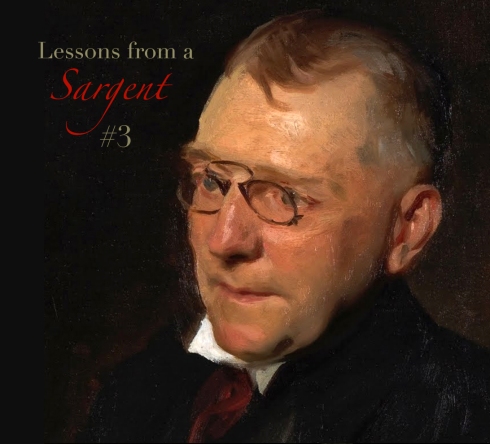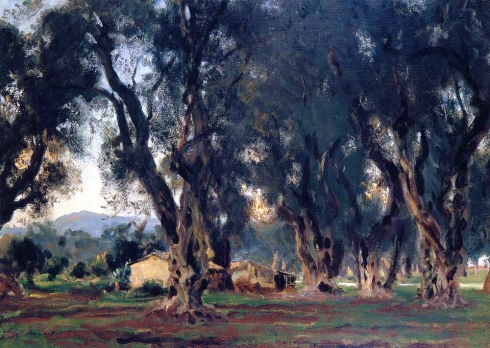In this final post analyzing the magnificent portrait by John S. Sargent, I would like to share my thoughts on his brilliance in attention to edges. I truly believe that accurate edge work is the one of the elements that separates great paintings from the good.

In Mr. Sargent’s piece, he utilized the full range of edges (softest to razor sharp), giving variety that adds great contrast, drama, and interest to the painting.
Notice how he has taken great care in modeling the transitions on the features of the face so as to soften them down so that the edges on the construction of the nose, eye sockets, brow line, and anatomy around the mouth did not compete with the razor sharp quality of the strongest, peripheral edge.
Again, as we see in this case, the sharpest edges presented themselves along the peripheral edge of the face (aside from the stark sharpness of the rims on the glasses). In my experience teaching painting, I have seen many students wary of putting the hardest edge on the far side of the face for fear that the distant side will not recede, but if this is how it actually looks in the squint, (see Technical Insight #3), we must not doubt the verity of this and put the transition in as we see it.

Sargent’s “Olive Trees at Corfu” is another excellent example of the artist not being afraid to put the strongest edge on the farthest, most distant mountain, which visually had the sharpest edge. Often we have heard that we must soften distant objects, but this is not always so. How did he decide this edge relationship should be painted as such? I am sure that is how it actually looked in its true relationship. Again, it is critical to squint to see the variety, accuracy, and contrast of the edges. I would encourage you to study many of the great masters to see how their handling of edges brings their work to life. Keep Squinting!!! 🙂
I have taken the time to extensively describe these edge principles in our videos for those interested in further explanation. Click image to see more… Enjoy!
Thank you!

